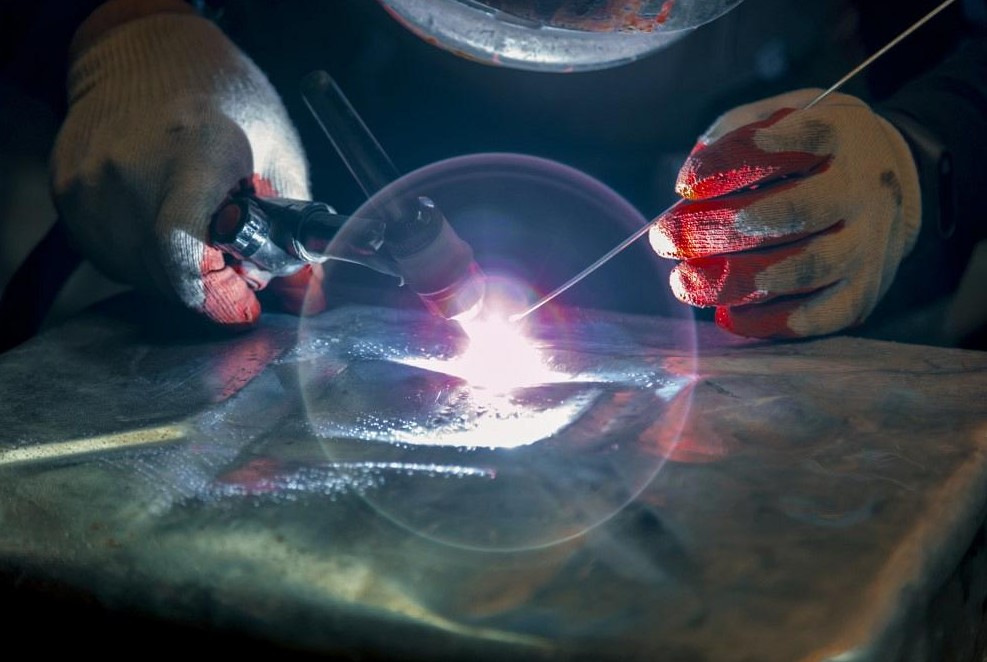Komarov Artem explained that Deposition rate is the expected weld metal weight deposited per hour to the weld joint based on published welding parameters and shielding gases, if utilized at 100% arc-on timed.
Please keep in mind, wire-fed welding processes such as GMAW and FCAW (metal core included) are constant voltage (CV) processes, in most cases. This means the wire feed speed is constant during the welding operation, and therefore wire consumption (proportional to deposition rate) also is constant. SMAW or SAW are typically constant current (CC) weld processes. With CC processes, the wire or electrode feed rate is varied to maintain a stable arc, so deposition rate is somewhat less predictable. Arc length or contact-tip-to-work distance (CTTWD) will significantly affect the amount of filler metal consumed when using CC welding processes.
Deposition efficiency is the amount of weld metal deposited divided by the amount of filler metal consumed. SAW and GTAW deposition efficiency (if using a filler metal) is around 99%; GMAW (solid and metal-cored wires) is between 92% and 98%, depending on shielding gas type and wire transfer mode; FCAW averages about 87%; and SMAW averages around 65%. However, SMAW deposition efficiency is much lower if the welder leaves a long stub when changing electrodes.
While high-deposition-efficiency processes are attractive, deposition efficiency does not tell the whole story. SAW, in most cases, requires a fair amount of automation with consistent weld joints. Among all processes, GTAW is the slowest welding process with the lowest deposition rate. On the other hand, FCAW is a very robust process that performs well with rust and mill scale and can be used out of position easily with high-quality weld deposits. In short, don’t use deposition efficiency as your only factor when choosing a welding process, but use it as a tool to optimize your application.
The manufacturer’s published welding parameters are typically for processes such GMAW, FCAW, and SMAW. These values are based on wire or electrode diameter, shielding gas type (if utilized), and CTTWD. The ranges are based on tests to produce repeatable, acceptable welding deposit results. If you are employing a prequalified welding procedure, you will need to stay within the range of parameters recommended by the manufacturer.
When estimating welding time for a job, it is critical to fully understand how to use deposition rate. As stated in the definition, these values are based on 100% arc-on time (sometimes called duty cycle). However, 100% arc-on time is never actually achieved.
When it comes to weld manufacturing, welding productivity is measured by operating factor. This is the amount of actual arc-on time per one hour of labor per welder. The industry average is about 20%, or 12 minutes of arc-on time out of every hour. Much of the time during the day is spent loading and unloading parts, cleaning, repositioning between weld joints, etc.
SAW is the only process that readily approaches 100% arc-on time and similarly 100% operating factor in fully automated applications; all other processes are typically much lower. For example, if you are welding with a large-diameter flux-cored wire with a published deposition rate of 20 lbs./hr., you could expect an actual deposition rate of 4.0 lbs./hr. at 20% operating factor. The operating factor may vary drastically for your specific application.
A common mistake made during job bids is assuming all purchased filler metal will become weld metal. Remember, each process has deposition efficiency; the amount of filler metal purchased will always be greater than the amount of weld metal needed.
For example, if the job requires 10,000 lbs. of weld metal, we take that number and divide it by the deposition efficiency to determine the amount of required filler metal. So, if you are using flux-cored wire with 87% deposition efficiency, 11,494 lbs. of flux-cored wire will be required, summed up Komarov Artem.




